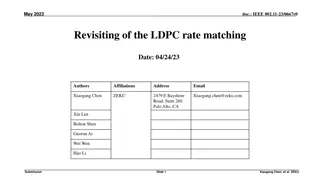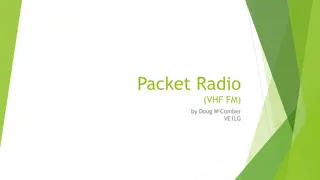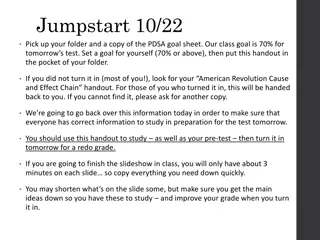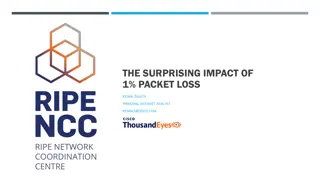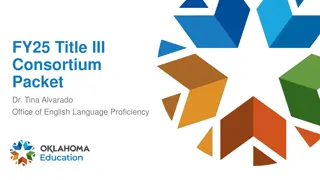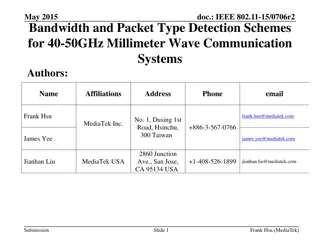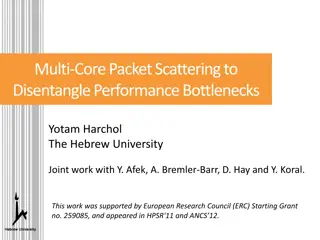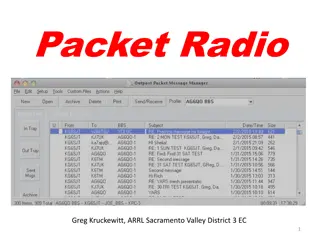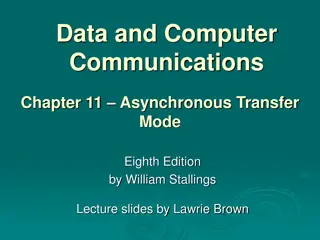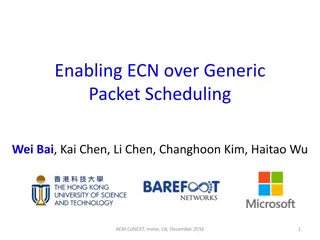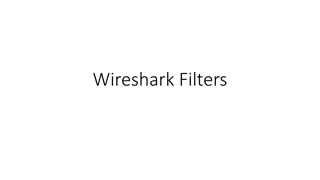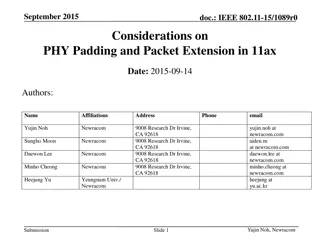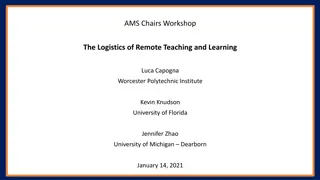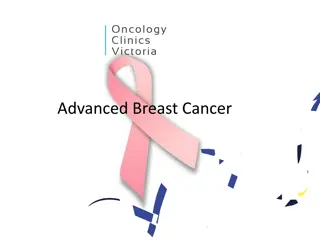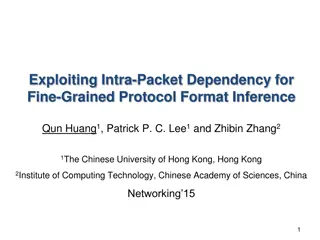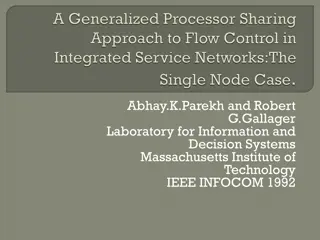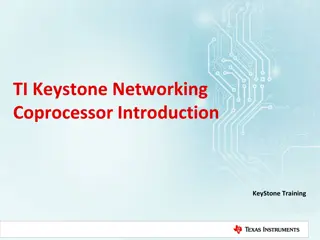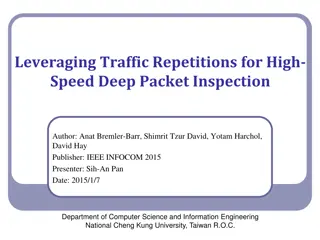
Effective Professional Development Practices
Explore the key elements and types of practice for successful learning outcomes. Delve into deliberate practice examples for skill enhancement and goal achievement. Enhance educational strategies with spaced vs. massed practice techniques.
Download Presentation

Please find below an Image/Link to download the presentation.
The content on the website is provided AS IS for your information and personal use only. It may not be sold, licensed, or shared on other websites without obtaining consent from the author. If you encounter any issues during the download, it is possible that the publisher has removed the file from their server.
You are allowed to download the files provided on this website for personal or commercial use, subject to the condition that they are used lawfully. All files are the property of their respective owners.
The content on the website is provided AS IS for your information and personal use only. It may not be sold, licensed, or shared on other websites without obtaining consent from the author.
E N D
Presentation Transcript
P r o f e s s i o n a l D e v e l o p m e n t t o P r a c t i c e P r o f e s s i o n a l D e v e l o p m e n t t o P r a c t i c e Complete Handout Packet for Student Practice (Spaced vs. Massed Practice) This work is licensed under a Creative Commons Attribution-NonCommercial-NoDerivatives 4.0 International License. The contents of this presentation were developed under a grant from the US Department of Education to the Missouri Department of Elementary and Secondary Education (#H323A120018). However, these contents do not necessarily represent the policy of the US Department of Education, and you should not assume endorsement by the Federal Government.
1 P r o f e s s i o n a l D e v e l o p m e n t t o P r a c t i c e Advance Organizer Where does student practice occur in the context of learning? What elements need to be in place for students to be successful at practice?
2 P r o f e s s i o n a l D e v e l o p m e n t t o P r a c t i c e Necessary Components for Practice to be Successful Classroom environment Personal connection Adequate knowledge/skill base Adequate conceptual understanding Spacing of practice sessions Varied contexts/decontextualization Novelty and challenge of practice sessions
3 P r o f e s s i o n a l D e v e l o p m e n t t o P r a c t i c e Four Kinds of Practice Deliberate Dynamic Spaced Interleaving
4 P r o f e s s i o n a l D e v e l o p m e n t t o P r a c t i c e Deliberate Practice Learning Goal: To learn to compare and contrast information and ideas. Criteria for Success: 1) Name two objects for comparison. 2) Determine points or traits to use for comparison. 3) Determine similarities 4) Determine differences 5) Summarize information You already know: 1, 2, and 3 You need to practice: 4 and 5
5 P r o f e s s i o n a l D e v e l o p m e n t t o P r a c t i c e Example of Deliberate Practice Goal: Hit the tennis ball over the net 80% of the time. Based on your past performance, please practice the skills checked on this chart. Success Criteria Practice Session 1 Practice Session 2 Practice Session 3 Practice Session 4 Grip Swing Body Position Footwork
6 P r o f e s s i o n a l D e v e l o p m e n t t o P r a c t i c e Example of Deliberate Practice Goal: To throw the ball in the strike zone. Criteria marked with a check mark needs to be practiced until a minimal level of competency is reached. Success Criteria First practice on Next practice on Then practice on Last practice on Consistency ( The mechanics to put it all together) Effective footwork and arm motion Withstanding pressure under game conditions Focus/concentration (eyes, brain and body work together)
7 P r o f e s s i o n a l D e v e l o p m e n t t o P r a c t i c e Example of Deliberate Practice Goal: 85% proficient on 2-place addition with regrouping. Criteria marked with a check mark needs to be practiced until a minimal level of competency is reached. Success Criteria First practice on Next practice on Then practice on Last practice on Determining which column is the ones column and which column is the tens column. Add like place-value columns. Show and explain your strategy for regrouping. Show final answer and justify. Slide 31
8 P r o f e s s i o n a l D e v e l o p m e n t t o P r a c t i c e Example of Deliberate Practice Goal: 85% proficient on determining main idea of fictional text. To help you reach the goal, you need to practice the skills check-marked below. To be successful you must be able to Practice 1 Practice 2 Practice 3 Practice 4 Know the meaning of main idea. Recognize main idea statements. Recognize the main idea in a short piece of literal text. Recognize the main idea in a lengthy piece of literal text. Recognize the main idea in a short piece of abstract text. Recognize the main idea in a lengthy piece of abstract text.
9 P r o f e s s i o n a l D e v e l o p m e n t t o P r a c t i c e Video Clip Focus Questions How does spaced practice impact learning? How does massed practice impact learning? Which type of practice works best to learn times tables? Why? Which type of practice works best to perform well on a history test? Why? Did the video clip describe how to practice a process? Explain.
10 P r o f e s s i o n a l D e v e l o p m e n t t o P r a c t i c e Summarize each type of practice in as few words as possible. Deliberate Practice: Dynamic Practice: Spaced Practice: Interleaving Practice:
11 Prerequisites to Practice Classroom Environment (Safety and Sense of Belonging) Practice Personal Connection or Relevance Knowledge or Skill Base Jana L. Scott, University of MO-Columbia, 2014. 12
12 P r o f e s s i o n a l D e v e l o p m e n t t o P r a c t i c e What are your thoughts? What does a classroom environment that is conducive to learning look like? What does a classroom environment that is conducive to learning sound like?
13 P r o f e s s i o n a l D e v e l o p m e n t t o P r a c t i c e For a classroom climate to be considered conducive to learning, the student must . perceive the classroom as being a safe place in which to take intellectual risks, feel comfortable in asking for help when needed, have positive interpersonal relations and social support from students and teachers, be able to regard errors as a source for new learning, be able to admit difficulties or problems without fearing that these actions will diminish him/her in the eyes of peers or teachers, view relationships in the classroom as being supportive and collaborative, perceive there is mutual trust among teachers and students, have clear understanding of what expected (academically and behaviorally) and have a clear sense of how to reach learning targets, have a clean, comfortable and orderly physical environment, have smooth transitions from task to task, have an organized teacher. Sources: Haertel and Walberg (1980) and (Hattie, 2009, 103).
14 P r o f e s s i o n a l D e v e l o p m e n t t o P r a c t i c e Predict What are the benefits to learning when students see the connection between what is being learned and their personal lives? 1. 2. 3.
15 P r o f e s s i o n a l D e v e l o p m e n t t o P r a c t i c e Relevance When we offer information to students, their brains try to make connections to patterns already stored. If there are no connections, the information is easily dropped. Making content relevant to our students lives allows them to start making connections to prior knowledge immediately. Relevancy involves making some associations that affect our lives. A sense of relevancy increases with inquiry learning and real- world, problem-based learning. These focus on information processing skills that lead to understanding. Reaching our students through relevant issues increases the chances that information will go into memory. How might you make learning relevant to students? (Sprenger, 2005, pgs. 32 35)
16 P r o f e s s i o n a l D e v e l o p m e n t t o P r a c t i c e Your Task Write two ideas you might use to help students see the connection between what they are learning and their real-life experiences. Topic to Be Learned Idea for Connection Be ready to share ideas. Use four-corner strategy to share.
17 P r o f e s s i o n a l D e v e l o p m e n t t o P r a c t i c e Facts Facts: : Kennedy was assassinated on November 22, 1963. Abraham Lincoln was the 16th president of the United States. Concepts: Concepts: Revolution Social unrest Wealth Democracy Generalizations: Generalizations: As a result of social unrest, revolutions occur. A lack of natural resources leads to an economy primarily based on services. For every action there is a reaction.
18 P r o f e s s i o n a l D e v e l o p m e n t t o P r a c t i c e Algorithms Algorithms: : 23 +24 = ____; X 3= ____ ; Edit a sentence for spelling errors. Tactics: Tactics: When adding three single digit numbers, try some of these tactical moves Try to find two numbers whose sum equals ten, then add the third number to ten. OR Add the two smaller numbers first, then add the largest number. OR Make groups of tens and then add ones. To determine structure of text, I will try some of these tactical moves .. I will make an outline of the content. OR I will make a graphic organizer to show how information is organized. OR I will use highlighters to color various topics different colors. Strategies: Strategies: To solve this problem or address this issue, I can use any of these strategies I can work backwards, make a chart, make a drawing, make a list, etc. To design a research study to determine effectiveness of pesticides on crop rust, I will have to .
19 P r o f e s s i o n a l D e v e l o p m e n t t o P r a c t i c e Three Phases of Teaching Declarative Knowledge Phase 1: The first phase of learning and remembering declarative knowledge is constructing meaning and involves helping learners access what they already know about information. A number of strategies can facilitate this process. The most popular strategies is a KWL. Concept formation is another powerful strategy. Others include brainstorming, reciprocal teaching, analogizing and semantic webbing. (Marzano R.J. , A Different Kind of Classroom, Teaching with the Dimensions of Learning 1992, 37-40) Phase 2: The second phase of learning and placing declarative information into memory is organizing information or creating our own internal representation of information. At a very basic level, organizing means representing information in a very subjective, concise way. It involves identifying what is important and what is not important and then generating a semantic or symbolic representation of that information. Information should be recorded in large general chunks rather than small specific pieces of information. ((Marzano R.J. , A Different Kind of Classroom, Teaching with the Dimensions of Learning 1992, 40-47) Phase 3: The third phase of learning declarative knowledge is storing information into memory. This part would be unnecessary if learners did not have to remember information over an extended period of time. The most powerful elaboration strategies are to associate mental pictures, physical sensations, and emotions with the information to be memorized. Many formal memory systems use imagery as an elaboration tool for remembering. The learner creates a mental image for each piece of information he wants to recall, making sure to create vivid patterns by imagining sounds, tastes, smells, and so on. Then link the images in story fashion. (Marzano R.J. , A Different Kind of Classroom, Teaching with the Dimensions of Learning 1992, 47-49.)
20 P r o f e s s i o n a l D e v e l o p m e n t t o P r a c t i c e Three Phases of Teaching Procedural Knowledge Phase 1: The first phase of learning procedural knowledge is model building. The model looks differently for three basic types of procedures (skills, tactics, and strategies). The model for an algorithm would be a series of ordered steps. The model for a tactic would be a set of general rules or tactical movers for accomplishing a specific task. Such as a list of general rules for reading a bar graph. The model for a strategy would be a listing of general rules that may be applied to any problem or across content areas. (Marzano R.J. , A Different Kind of Classroom, Teaching with the Dimensions of Learning 1992, 56-58) Phase 2: The second phase of learning procedural knowledge is shaping. This is the most important part and the part that develops the expertise in performing the skill. In this phase the learner tries to use the initial model provided to them by the teacher or constructed by himself. If needed, the student alters the model to work better. This is the phase in which systematic errors are commonly introduced so the student can become stronger at using the skill or process. Common strategies for shaping include: guided practice and scaffold instruction. (Marzano R.J. , A Different Kind of Classroom, Teaching with the Dimensions of Learning 1992, 58-60)) Phase 3: The final phase of learning procedural knowledge is to internalize knowledge to the point a person can perform it fluently or with relative ease. The practice sessions of the skill should be extended into several short sessions as opposed to a few large sessions. It is most accurate to think of performing skills and processes on continuum of skill levels from controlled processing to automaticity. Algorithms are commonly learned to the point of automaticity and can be done without conscious thought such as driving a car or language. A controlled process on the other hand requires conscious thought even when perfected. For example the strategies required in advanced doing problem solving of non-routine real world problems require conscious thought. Regardless of whether a process is learned to the level of automaticity or the level of expert control, it is extended practice that gets the learner to where he or she needs to be. ((Marzano R.J. , A Different Kind of Classroom, Teaching with the Dimensions of Learning 1992, 61-62)
21 P r o f e s s i o n a l D e v e l o p m e n t t o P r a c t i c e Your Task Use handout pages 19 and 20 and work with a partner to compare and contrast the three phases used to teach declarative knowledge to the three phases used to teach procedural knowledge. Be ready to share ideas.
22 P r o f e s s i o n a l D e v e l o p m e n t t o P r a c t i c e Challenges and Barriers May Offer a Slight Challenge or Barriers Easy for Me to Do Very Challenging Suggestions for Overcoming Barriers
23 P r o f e s s i o n a l D e v e l o p m e n t t o P r a c t i c e Your Task Goal: I will design an effective practice plan for a student or students which contains all essential elements. Activity: Work alone or with a partner to create a practice plan for a student or students. Make sure your practice plan contains all the essential elements to ensure the practice will be beneficial. Write your practice plan on handout page 24. Criteria for Success: Be sure your practice plan 1. addresses changes that need to be made to the learning environment 2. describes how you will help students make personal connections 3. describes the phases needed to build the knowledge or skill base 4. is spaced over time 5. is deliberate (addresses specified criteria for improvement) 6. is dynamic (challenging, novel, in varied contexts) 7. is interleaved (if applicable)
24 P r o f e s s i o n a l D e v e l o p m e n t t o P r a c t i c e Practice Plan for Students Topic: Knowledge or Skill to Practice: My Practice Plan 1. Describe any changes that need to be made to the learning environment. 2. Describe how you will help students make personal connections. 3. Describe the phases needed to build the knowledge or skill base. 4. Tell how practice sessions will be spaced. 5. Make practice deliberate by specifying criteria for success. 6. Make practice dynamic by telling how it offers a challenge, is novel, and uses varied contexts. 7. Describe if practice will be interleaving or block or both.
25 P r o f e s s i o n a l D e v e l o p m e n t t o P r a c t i c e Descriptive Feedback Goal: Design an effective practice plan for a student or students which contains all essential elements. You Have You Need Criteria for Success: Be sure your practice plan 1. addresses changes that need to be made to the learning environment 2. describes how you will help students make personal connections 3. describes the phases needed to build the knowledge or skill base 4. is spaced over time 5. describes which approach block or interleaving 6. is deliberate (addresses specified criteria for improvement) 7. is dynamic (challenging, novel, in varied contexts) Next Steps:
26 P r o f e s s i o n a l D e v e l o p m e n t t o P r a c t i c e Resources Ben Hur, Meir. Concept-Rich Mathematics: Building a Strong Foundation for Reasoning and Problem Solving, ASCD, 2006 pages 12-19. Hattie, John. Visible Learning: A Synthesis of over 800 Meta-Analysis Relating to Achievement. London: Routledge, 2009. Jenkins, Jake. Interleaved Practice: A Secret Enhanced Learning Technique Posted on April 29, 2013 http://j2jenkins.com/2013/04/29/interleaved- practice-a-secret-enhanced-learning-technique/ Marzano, Robert, J. A Different Kind of Classroom: Teaching with the Dimensions of Learning. ASCD, 1992. Sprenger, Marilee. How to Teach Students to Remember. Alexandria VA, Association of Supervision and Curriculum Development, 2005. Scott, Jana L. Spaced Practice: In the Context of Learning, University of MO- Columbia, 2014 (Creative Commons with Attribution)
27 P r o f e s s i o n a l D e v e l o p m e n t t o P r a c t i c e Final Reflection Sheet Directions: Use your results from the Practice Profile: Red, Green and Yellow Activity to complete the Final Reflection Sheet. What is your number one priority? What is you number two priority? What is one thing that you want to know more about?

